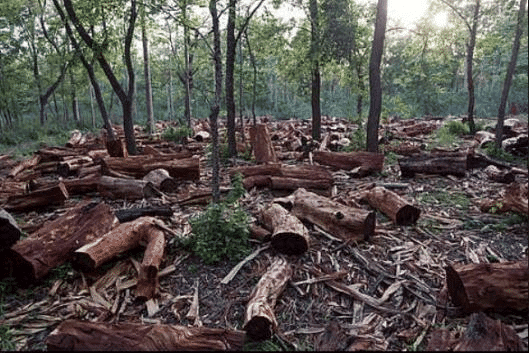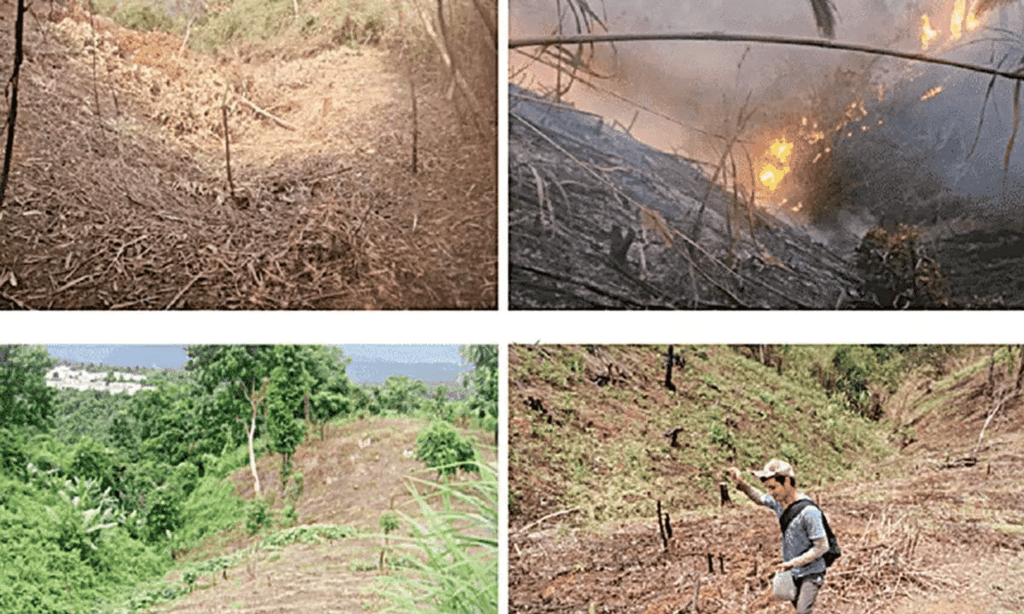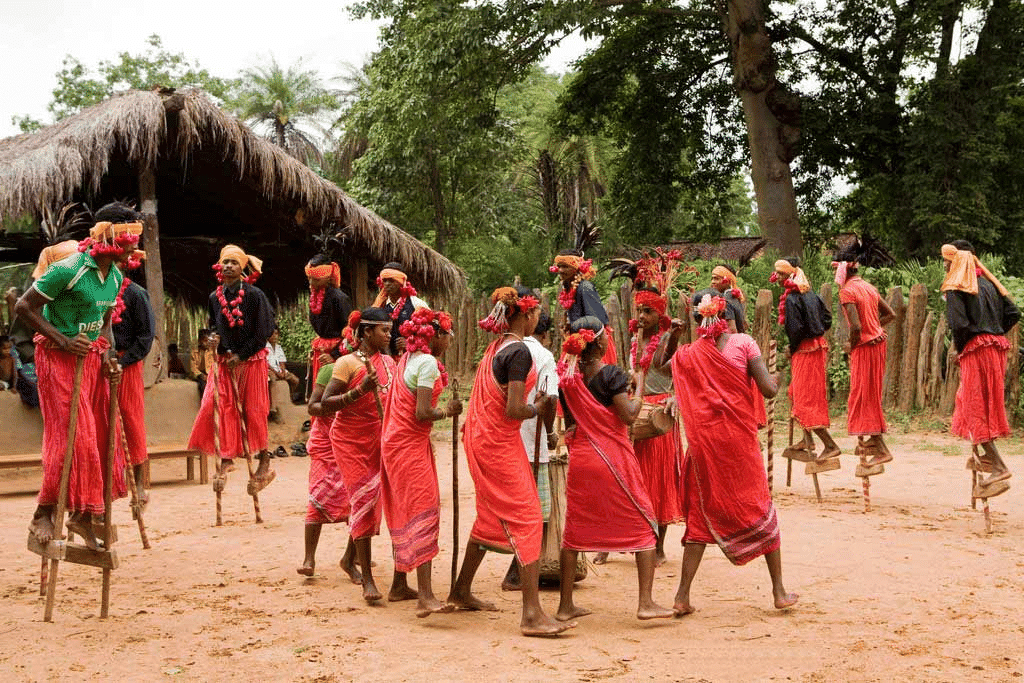Mnemonics: Forest Society and Colonailism | Social Studies (SST) Class 9 PDF Download
1. Role of Forests
Mnemonic: “Enrich Climate, Save Soil, Support Life, Refresh Souls”
- Enrich → Improve environment (Forests enhance environmental quality, modify climate)
- Climate → Control climate/erosion (Modify local climate, prevent soil erosion)
- Save → Support industries/livelihoods (Provide resources for industries, livelihoods for communities)
- Soil → (Reinforces soil erosion control and stream flow regulation)
- Support → Wildlife habitat (Natural environment for wildlife, maintain life support systems)
- Life → (Reinforces life support systems)
- Refresh → Recreation (Offer recreation opportunities)
- Souls → (Reinforces forests’ broader benefits)

Mnemonic Explanation: This phrase depicts forests enriching the climate, saving soil, supporting life, and refreshing souls. It covers the multifaceted roles of forests—environmental improvement, climate and erosion control, industry/livelihood support, wildlife habitat, and recreation—in a vivid, memorable sequence.
How to Use: Visualize forests enriching the climate, saving soil, supporting wildlife, and refreshing people. Link each word to its role (e.g., “Enrich” = Improve environment). Test by recalling: environment quality, climate/erosion control, industries/livelihoods, wildlife habitat, recreation.
2. Causes of Deforestation
Mnemonic: “Colonial Crops, Timber Tracks, Plantation Profits”
- Colonial → Colonial influence (British cleared forests for commercial crops like jute, sugar, wheat)
- Crops → Land for cultivation (Increased cultivation due to population growth, European demand)
- Timber → Timber for railways/ships (Oak shortage, railway sleepers needed 1,760–2,000 per mile)
- Tracks → (Reinforces railway expansion, e.g., 25,500 km by 1890)
- Plantation → Plantations (Cleared forests for tea, coffee, rubber plantations)
- Profits → (Reinforces European demand for plantation commodities)

Mnemonic Explanation: This phrase highlights colonial policies driving deforestation through crops, timber for tracks, and plantation profits. It covers the main causes: colonial crop expansion, railway/ship timber needs, and plantation development, with imagery of tracks and profits for recall.
How to Use: Picture colonial rulers clearing forests for crops, cutting timber for tracks, and planting for profits. Link each word to its cause (e.g., “Crops” = Land for cultivation). Test by recalling: colonial crops (jute, wheat), timber (railways), plantations (tea, coffee).
3. Rise of Commercial Forestry
Mnemonic: “Brandis Builds Strict Forests”
- Brandis → Dietrich Brandis (German expert, first Inspector General, introduced scientific forestry)
- Builds → Indian Forest Service/Act (Set up in 1864, Indian Forest Act 1865)
- Strict → Forest classification (1878 Act: reserved, protected, village forests; reserved forests restricted)
- Forests → Imperial Forest Research Institute (Established 1906, taught scientific forestry)
Mnemonic Explanation: This phrase portrays Brandis building a strict forest management system. It covers his contributions (scientific forestry, Forest Service, Forest Act, Research Institute) and the 1878 Act’s forest classifications, with “strict” emphasizing restrictions on reserved forests.
How to Use: Visualize Brandis building strict forest rules. Link each word to its concept (e.g., “Brandis” = Dietrich Brandis). Test by recalling: Brandis (scientific forestry), Forest Service (1864), Forest Act (1865, 1878 classifications), Research Institute (1906).
4. Impacts of Forest Laws on People
Mnemonic: “Villagers Need, Laws Block, Guards Bribe”
- Villagers → Villagers’ needs (Used forests for fuel, fodder, food, tools, medicine, crafts)
- Need → (Reinforces diverse forest product uses, e.g., bamboo, mahua oil)
- Laws → Forest Act restrictions (Banned wood cutting, grazing, collecting products)
- Block → (Reinforces illegalization of traditional practices)
- Guards → Corruption/harassment (Forest guards demanded bribes, harassed villagers)
- Bribe → (Reinforces bribery, especially affecting women collecting fuelwood)
Mnemonic Explanation: This phrase shows villagers needing forest resources but blocked by laws, facing guard bribes. It covers the conflict between villagers’ traditional uses (food, tools, crafts) and Forest Act restrictions, plus corruption’s impact, with a clear narrative.
How to Use: Picture villagers needing forest goods, blocked by laws, and bribing guards. Link each word to its impact (e.g., “Villagers” = Needs). Test by recalling: villagers’ uses (fuel, fodder), restrictions (Forest Act), corruption (bribes, harassment).
5. Effects on Shifting Cultivation and Hunting
Mnemonic: “Slash Hunt Banned, Royals Roamed”
- Slash → Shifting cultivation banned (Colonial ban on swidden agriculture, e.g., jhum, due to railway timber needs)
- Hunt → Hunting restrictions (Forest laws banned villagers’ customary hunting, punished poaching)
- Banned → (Reinforces bans on both practices)
- Royals → Royal/colonial hunting (British increased big game hunting, e.g., 80,000 tigers killed)
- Roamed → (Reinforces elite hunting, later conservation efforts)

Mnemonic Explanation: This phrase depicts slashing forests and hunting being banned for villagers, while royals roamed freely. It covers the bans on shifting cultivation and hunting, contrasting with colonial hunting (tigers, leopards) and later conservation, using vivid imagery.
How to Use: Visualize villagers slashing forests and hunting, banned, while royals hunt freely. Link each word to its effect (e.g., “Slash” = Shifting cultivation). Test by recalling: shifting cultivation ban (jhum), hunting ban (poaching), colonial hunting (tigers), conservation.
6. New Trades, Employment, and Services
Mnemonic: “Trade Forests, Work Plantations, Lose Freedom”
- Trade → New trades (Communities traded forest products, e.g., hides, bamboo; British monopolized)
- Forests → (Reinforces forest product trade, e.g., Mundurucu rubber, adivasi spices)
- Work → New employment (Pastoralists/nomads forced into factory/plantation work, e.g., Assam tea)
- Plantations → (Reinforces plantation labor, low wages, poor conditions)
- Lose → Loss of livelihood (Grazing/hunting bans, ‘criminal tribes’ label restricted nomads)
- Freedom → (Reinforces limited mobility, harsh conditions)
Mnemonic Explanation: This phrase shows trading forest goods, working plantations, and losing freedom. It covers new trades (forest products), forced employment (plantations), and livelihood loss (grazing bans, criminalization), with a narrative of lost autonomy.
How to Use: Picture trading forest goods, working plantations, and losing nomadic freedom. Link each word to its concept (e.g., “Trade” = New trades). Test by recalling: trades (hides, bamboo), employment (plantations), livelihood loss (grazing bans, criminal tribes).
7. Forest Rebellions (Bastar and Java)
Mnemonic: “Bastar Fights, Java Cuts, Samin Lies”
- Bastar → Bastar rebellion (1910, Dhurwas resisted forest reservation, reduced reserved area)
- Fights → (Reinforces Gunda Dhur’s rebellion, used mango boughs, arrows)
- Java → Java’s Kalangs (1770, resisted Dutch control, attacked fort)
- Cuts → (Reinforces Kalangs’ woodcutting, shifting cultivation)
- Samin → Samin’s challenge (1890, Java, protested forest ownership, lay on ground)
- Lies → (Reinforces Samin’s protest by lying down)

Mnemonic Explanation: This phrase depicts Bastar fighting, Java cutting forests, and Samin lying in protest. It covers the Bastar rebellion (1910), Kalangs’ resistance (1770), and Samin’s movement (1890), with vivid actions (fights, cuts, lies) for recall.
How to Use: Visualize Bastar rebels fighting, Java’s Kalangs cutting, and Samin lying down. Link each word to its rebellion (e.g., “Bastar” = Bastar rebellion). Test by recalling: Bastar (1910, Dhurwas), Java Kalangs (1770, fort attack), Samin (1890, protest).
8. New Developments in Forestry
Mnemonic: “Conserve Forests, Village Guardians Shine”
- Conserve → Conservation shift (1980s, focus on conservation over timber)
- Forests → (Reinforces forest protection efforts)
- Village → Village involvement (Communities manage forests, e.g., sacred groves like sarnas)
- Guardians → Local patrols (Villages patrol forests, rotate household duties)
- Shine → New approaches (Environmentalists, communities explore sustainable management)
Mnemonic Explanation: This phrase shows conserving forests with villages as shining guardians. It covers the shift to conservation (1980s), village involvement (sacred groves, patrols), and new sustainable approaches, with imagery of guardianship for recall.
How to Use: Picture villages conserving forests as shining guardians. Link each word to its development (e.g., “Conserve” = Conservation shift). Test by recalling: conservation (1980s), village management (groves, patrols), new approaches (sustainable forestry).
|
55 videos|525 docs|78 tests
|
FAQs on Mnemonics: Forest Society and Colonailism - Social Studies (SST) Class 9
| 1. What is the role of forests in the ecosystem? |  |
| 2. What are the primary causes of deforestation? |  |
| 3. How has commercial forestry contributed to environmental changes? |  |
| 4. What impacts have forest laws had on local communities? |  |
| 5. What are the effects of shifting cultivation and hunting on forests? |  |





















